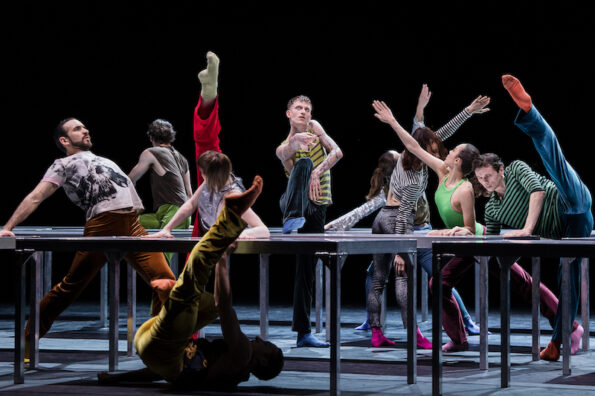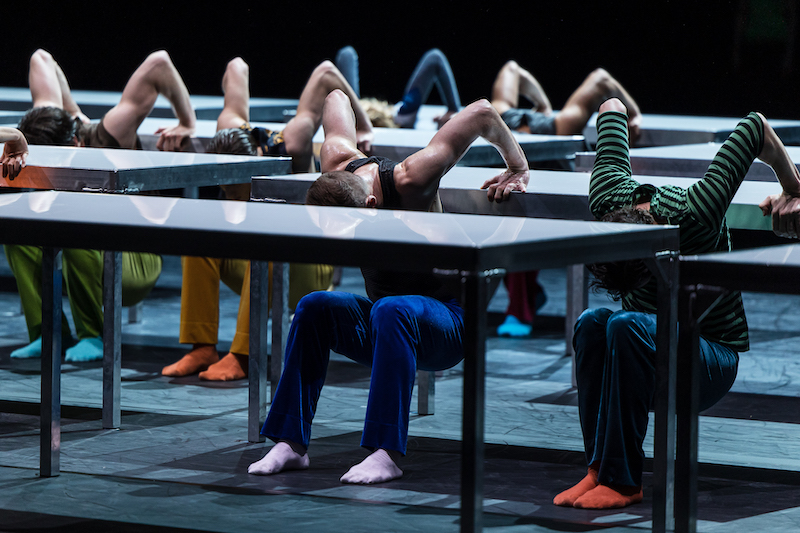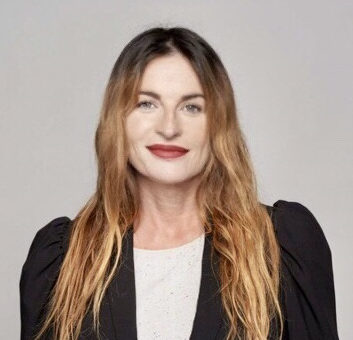Search
To search for an exact match, type the word or phrase you want in quotation marks.
A*DESK has been offering since 2002 contents about criticism and contemporary art. A*DESK has become consolidated thanks to all those who have believed in the project, all those who have followed us, debating, participating and collaborating. Many people have collaborated with A*DESK, and continue to do so. Their efforts, knowledge and belief in the project are what make it grow internationally. At A*DESK we have also generated work for over one hundred professionals in culture, from small collaborations with reviews and classes, to more prolonged and intense collaborations.
At A*DESK we believe in the need for free and universal access to culture and knowledge. We want to carry on being independent, remaining open to more ideas and opinions. If you believe in A*DESK, we need your backing to be able to continue. You can now participate in the project by supporting it. You can choose how much you want to contribute to the project.
You can decide how much you want to bring to the project.

William Forsythe, the American choreographer with a calm demeanour and explosive mind, belongs to that lineage of artists who prefer to dynamite traditions rather than polish them. Since the 1970s, he has revolutionised dance by stretching the limits of academic ballet, liberating the body from the corsets of classical technique and expanding choreographic vocabulary.
Born in New York in 1949, Forsythe dismantles classical ballet with the precision of Derrida deconstructing a text. But there’s no nostalgia for what’s disassembled – only the euphoria of a new language. With this deconstructed and experimental approach, he led the Frankfurt Ballet for 20 years (1984-2004). His works function as living systems, rhizomes where each dancer is a decision-making node and space folds according to cybernetic logic. After leaving Frankfurt, he founded The Forsythe Company (2005), dedicated to contemporary dance and interdisciplinary performance.
Today, his pieces are modern classics – hence the tribute by Berlin’s Staatsballett during Easter Week, staging three of his seminal works.
Imagine a stage populated by twenty metal tables. Fourteen dancers slip between them like electrons in a particle accelerator, avoiding collisions with millimetrically calculated glances. They synchronise through subtle cues (gazes and gestures) while grazing the metal and stifling sharp breaths. This is One Flat Thing, reproduced (2000), a work where space is no longer a container because Forsythe doesn’t organise bodies; he frees them into self-governing systems, as if each performer were both soloist and architect of an ephemeral order.
Here, the art of perfect geometries becomes a wild rhizome – tangled and unpredictable. There’s no centre or hierarchy, only connections born and dying in real time. Forsythe proves dance can meditate on how we inhabit the world, negotiate freedom within limits, and, in this case, how bodies invent unforeseen paths around obstructing tables. Seeing it is not the same as explaining it.

One Flat Thing, reproduced at Staatsballett Berlin, April 2025. Photo: Yan Revazov
The work applies musical counterpoint to movement, interweaving independent yet complementary patterns while exploring the creative paradox of spatial constraints – the tables limit but also intensify inventiveness – turning each performance into a living score where dancers solve choreographic problems in real time. The title reflects this duality: “One Flat Thing” alludes to the tables as central axis, while “reproduced” suggests a reworking of Forsythe’s research into ballet’s deconstruction.
After 17 years away from traditional ballet, Forsythe returned to classical language with Blake Works I (2016), created for Paris Opera Ballet. Here, he unearths the vocabulary of the French school and torsos seemingly lifted from a Degas painting, only to submerge them in seven tracks from The Colour in Anything by young British singer-songwriter-producer James Blake, known for his emotionally charged blend of electronic, R&B and soul. Violins vanish; what remains are pianos seeping melancholy, beats, and a falsetto that transmutes pain into beauty.
If One Flat Thing… dynamited hierarchies with metal tables, Blake Works I is subtler sabotage – a classical ballet infiltrated by James Blake’s beats.
Finally, Approximate Sonata (also 2016) is a game of impossible balances. A series of pas de deux where dancers don’t merely execute steps but negotiate each shared weight and breath in real time. Choreographic forms – fragile, volatile – hold for just an instant before crumbling or mutating. Both bodies listen and contradict. Forsythe turns classical technique into an act of mutual trust: dancers fall into the void knowing the other will be there to catch them.
Forsythe doesn’t choreograph chaos: he breaks it down into precise gestures. What we witness is the precision of rebellion – bodies organising without leaders, where every decision is collective and every movement an act of autonomy.
(Front image: One Flat Thing, reproduced at Staatsballett de Berlín, April 2025. All images cortesía SSB. Photos: Yan Revazov)

María Muñoz-Martínez is a cultural worker and educator trained in Art History and Telecommunications Engineering, this hybridity is part of her nature. She has taught “Art History of the first half of the 20th century” at ESDI and currently teaches the subject “Art in the global context” in the Master of Cultural Management IL3 at the University of Barcelona. In addition, while living between Berlin and Barcelona, she is a regular contributor to different media, writing about art and culture and emphasising the confluence between art, society/politics and technology. She is passionate about the moving image, electronically generated music and digital media.
Portrait: Sebastian Busse
"A desk is a dangerous place from which to watch the world" (John Le Carré)